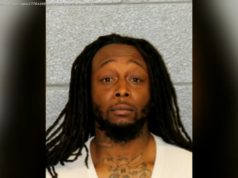What happened in April 1775 in and near Boston is an important chapter of the story of why, how and by whom America was birthed.
«LISTEN, my children, and you shall hear, of the midnight ride of Paul Revere», Henry Wadsworth Longfellow’s famous work begins. Longfellow wrote the poem in 1860 as America hurtled toward civil war, hoping to rally the Union to the cause of the abolitionist struggle.
The country, Longfellow believed, was worth saving, and retelling the story of Revere’s epic ride was his way of connecting the heroism of America’s founding to the perilous times of the present.
But the real-life story of what happened that night on April 18, 1775 (known as Patriots’ Day) and what happened the day after—the Battles of Lexington and Concord—is more compelling than Longfellow’s mythology. And more absolutely American.
It turns out Revere was not the solitary actor Longfellow chronicled in his poem. And his midnight ride didn’t spring out of a vacuum.
«There were other riders out that night and, far from detracting from Revere’s accomplishment, it made his role more important, because he was more than a messenger», professor David Hackett Fischer, author of Paul Revere’s Ride, told C-SPAN. «He was an organizing man, a man who got things done.»
The two men that joined Revere on his ride across the New England countryside were William Dawes and Samuel Prescott. What made their efforts so extraordinary was that ordinary citizens were doing the riding: Revere was a silversmith, Dawes a shoemaker and Prescott a doctor. And it was ordinary citizens doing the fighting the next day—farmers, shopkeepers, ministers and tradesmen.
Seventy-seven brave Americans took a stand in Lexington and 400-plus did the same in Concord against 700 British troops. When the battles ended, America lost 93 soldiers, the British 300. Soon thereafter, thanks to an intricate set of alarms and preparation, 20,000 colonial militia voluntarily converged on Boston.
What compelled those colonists to take up arms against the mighty British Army? It’s important to know a bit about Boston in that time.
«It was a city of 15,000», Fischer noted, «run by town meeting, and the town meeting was run partly by a group of organizations which were the first we know to be called caucuses.»
In short, Bostonians had been governing their own affairs for a long time, in their own way.
Things weren’t exactly rosy between the colonists and their British rulers in the 1760s and ’70s. But what set the flame of revolution was Parliament’s Coercive Acts, rightly called the Intolerable Acts by Americans, with General Thomas Gage—the first military governor of Massachusetts—serving as the local muscle.
«Gage was trying to shut down town meetings, so there was a head-on collision over ideas of representative government», Fischer noted.
Домой
United States
USA — Events Celebrating 250th Anniversary of Patriots' Day—And Why It Still Matters






